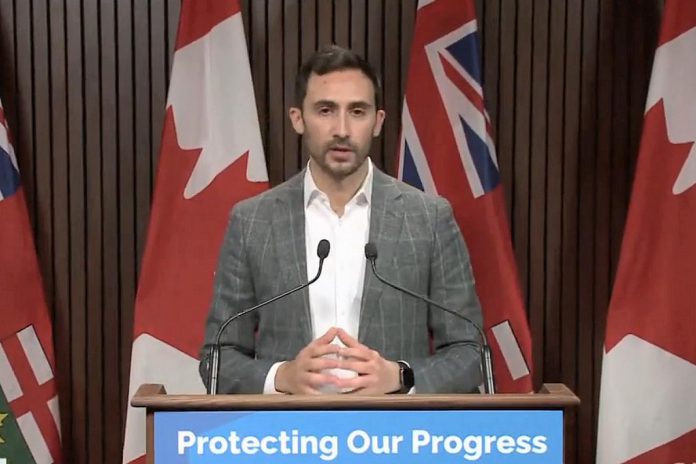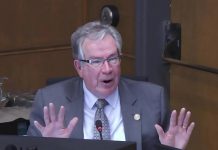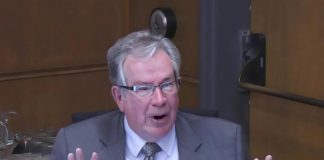
Staff and students in Ontario public schools will each receive two rapid antigen tests when they return to in-person learning on Monday (January 17), the Ontario government has announced.
The tests will be first distributed to staff in child care and public schools, children in child care settings, and students in public elementary schools, followed by secondary school students.
Over 3.9 million of the tests are being shipped to school boards this week, the government says, with additional tests to be delivered next week. If COVID-19 symptoms develop while staff or students are at school, they will be required to take the two rapid tests, 24 hours apart, and upon negative results can return to class.
“We believe so strongly that children need to be in school, that they are essential to the mental and physical health of a child and to their academic success,” said education minister Stephen Lecce during a media conference at Queen’s Park on Wednesday (January 12), which was also attended by Ontario’s chief medical officer of health Dr. Kieran Moore.
“Ontario’s plan to open and protect schools is focused on deploying millions of rapid tests to our schools and our child care centres, enhancing ventilation and high-quality PPE, along with increasing access to children on a voluntary basis and staff,” Lecce said.
The government will also be launching school-based vaccine clinics to encourage more vaccinations among children, with parental consent, and has asked school boards to work with local public health units to add vaccination clinics for students during the school day. While more 82 per cent of children 12 to 17 have received two doses of a COVID-19 vaccine, only 50 per cent of children aged five to 11 having received their first dose.
Parents will receive a form offering the opportunity to provide public health units the authority to vaccinate their child at a school-based vaccine clinic.
Dr. Moore was asked during the media conference why the province is not making COVID-19 vaccinations mandatory in schools, especially given the low uptake among children 5 to 11.
“It is a new vaccine, and as a result of that we want greater experience with it before we ever mandate it,” Dr. Moore said.
Some of the other measures being put in place at schools the government has previously announced, including providing 10 million optional non-fit-tested N95 masks to all education and child care staff and more than four million three-ply masks for students, deploying an additional 3,000 standalone HEPA filter units, and updating screening requirements for students and staff.
The province is also doubling the number of retired teachers who can work at schools, temporarily pausing high-contact extra curricular sports, establishing stricter lunch cohort requirements, and elevating cleaning requirements at all schools.
At a technical briefing held earlier on Wednesday, government officials said schools will now be monitoring student absenteeism rather than reporting on positive test results. That means school principals and public health units will only notify parents of a potential COVID-19 outbreak when around 30 per cent of students at a school are absent.
Schools will also provide public health units with daily updates on staff absences.
Although the government is no longer publicly reporting COVID-19 cases in schools, Dr. Moore said other information about COVID-19 infections in children will be available.
“Key metrics that we will continue to report, and we’re just generating these reports now, are going to be admissions to hospitals for paediatric populations — five to 11, 12 to 17, vaccinated/unvaccinated,” he explained. “We’re preparing those types of reports, so parents can see if there’s severe or adverse outcomes and the proportion of those patents who had to be hospitalized, that will be ongoing, systematically reported at a provincial level and regionally for Ontario.”
“We’re just generating that database now, but I will tell you that the risk of hospitalization is very, very low in Ontario for children,” he added.


























